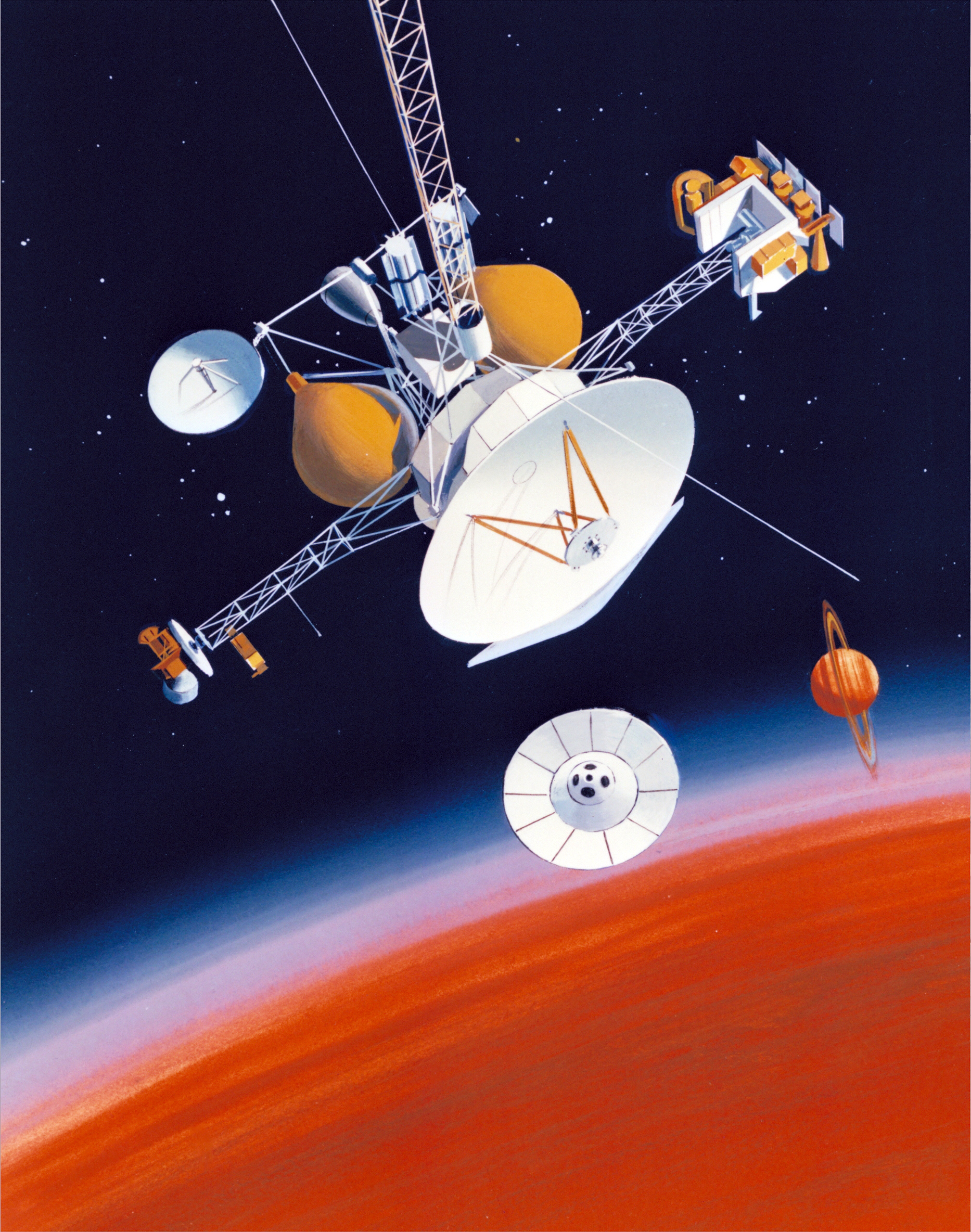Mariner Mark II on:
[Wikipedia]
[Google]
[Amazon]

 Mariner Mark II was
Mariner Mark II was
"Assessment of CRAF and Cassini missions"
by Dr. Robert O. Pepin, chair of the Committee on Planetary and Lunar Exploration of the National Academy of Sciences, 1988
"On the CRAF/Cassini Mission"
by DDr. Louis J. Lanzerotti, chair of the Space Studies Board, of the National Academy of Sciences, 1992
"Exploring the Trans-Neptunian Solar System"
National Academy of Sciences {{DEFAULTSORT:Mariner Mark Ii Proposed NASA space probes NASA programs Cancelled spacecraft Missions to Neptune Missions to Pluto

 Mariner Mark II was
Mariner Mark II was NASA
The National Aeronautics and Space Administration (NASA ) is an independent agencies of the United States government, independent agency of the US federal government responsible for the civil List of government space agencies, space program ...
's planned family of unmanned spacecraft
A spacecraft is a vehicle or machine designed to fly in outer space. A type of artificial satellite, spacecraft are used for a variety of purposes, including communications, Earth observation, meteorology, navigation, space colonization, p ...
for the exploration of the outer Solar System
The Solar SystemCapitalization of the name varies. The International Astronomical Union, the authoritative body regarding astronomical nomenclature, specifies capitalizing the names of all individual astronomical objects but uses mixed "Solar S ...
that were to be developed and operated by JPL between 1980 through the year 2010.
Summary
After the "flagship" multibillion-dollar missions of the 1970s, in the 1980s NASA was looking for a new, more affordable direction for the 1990s and beyond. Two projects were conceived by NASA's Solar System Exploration Committee in 1983, the Planetary Observer program, and Mariner Mark II. The Observer program, starting with theMars Observer
The ''Mars Observer'' spacecraft, also known as the ''Mars Geoscience/Climatology Orbiter'', was a robotic space probe launched by NASA on September 25, 1992, to study the Martian surface, atmosphere, climate and magnetic field. During the int ...
, was envisioned as a series of low-cost missions to the inner Solar System
The Solar SystemCapitalization of the name varies. The International Astronomical Union, the authoritative body regarding astronomical nomenclature, specifies capitalizing the names of all individual astronomical objects but uses mixed "Solar S ...
, based on commercial Earth satellites, while the Mariner Mark II was to be a series of large spacecraft for the exploration of the outer Solar System
The Solar SystemCapitalization of the name varies. The International Astronomical Union, the authoritative body regarding astronomical nomenclature, specifies capitalizing the names of all individual astronomical objects but uses mixed "Solar S ...
.
Mariner Mark II spacecraft were to use common design, hardware and software solutions, much of it derived from previous missions such as Voyager and Galileo as well as select new technologies, such as advanced gyroscopes, all with the aim of cutting costs. It was hoped that this new approach would reduce the mission costs to about $400 million each, about half the price of Galileo.
The first two missions of the project were to be a mission to Saturn and its moon Titan, the Saturn Orbiter/Titan Probe, or SOTP (later '' Cassini'') and the Comet Rendezvous Asteroid Flyby
The Comet Rendezvous Asteroid Flyby (CRAF) was a cancelled plan for a NASA-led exploratory mission designed by the Jet Propulsion Laboratory during the mid-to-late 1980s and early 1990s, that planned to send a spacecraft to encounter an asteroid ...
(CRAF), both of which were approved by Congress in 1990.
Other planned Mariner Mark II-based spacecraft were an ESA
, owners =
, headquarters = Paris, Île-de-France, France
, coordinates =
, spaceport = Guiana Space Centre
, seal = File:ESA emblem seal.png
, seal_size = 130px
, image = Views in the Main Control Room (120 ...
led follow-on to CRAF, the Comet Nucleus Sample Return or CNSR (later ''Rosetta
Rosetta or Rashid (; ar, رشيد ' ; french: Rosette ; cop, ϯⲣⲁϣⲓⲧ ''ti-Rashit'', Ancient Greek: Βολβιτίνη ''Bolbitinē'') is a port city of the Nile Delta, east of Alexandria, in Egypt's Beheira governorate. The Ro ...
'', without the sample return); '' Pluto Fast Flyby'', a flyby of Pluto (later ''Pluto Kuiper Express
''Pluto Kuiper Express'' was an interplanetary space probe that was proposed by Jet Propulsion Laboratory (JPL) scientists and engineers and under development by NASA. The spacecraft was intended to be launched to study Pluto and its moon Charo ...
'', eventually realized as '' New Horizons''); and a '' Neptune Orbiter'' with an atmospheric probe.
However, congressionally imposed reductions to FY 1992–93 funding requirements forced NASA to terminate the CRAF mission and to delay the ''Cassini'' launch from April 1996 to October 1997. In order to save it, NASA was forced to significantly redesign ''Cassini'' to reduce the total program cost, mass and power requirements.
NASA would replace the ''Mariner Mark II'' program with the lower-cost Discovery Program.
See also
*Mariner program
The Mariner program was conducted by the American space agency NASA to explore other planets. Between 1962 and late 1973, NASA's Jet Propulsion Laboratory (JPL) designed and built 10 robotic interplanetary probes named Mariner to explore the in ...
* Voyager program
The Voyager program is an American scientific program that employs two robotic interstellar probes, ''Voyager 1'' and ''Voyager 2''. They were launched in 1977 to take advantage of a favorable alignment of Jupiter and Saturn, to fly near t ...
* Pioneer program
External links
"Assessment of CRAF and Cassini missions"
by Dr. Robert O. Pepin, chair of the Committee on Planetary and Lunar Exploration of the National Academy of Sciences, 1988
"On the CRAF/Cassini Mission"
by DDr. Louis J. Lanzerotti, chair of the Space Studies Board, of the National Academy of Sciences, 1992
"Exploring the Trans-Neptunian Solar System"
National Academy of Sciences {{DEFAULTSORT:Mariner Mark Ii Proposed NASA space probes NASA programs Cancelled spacecraft Missions to Neptune Missions to Pluto